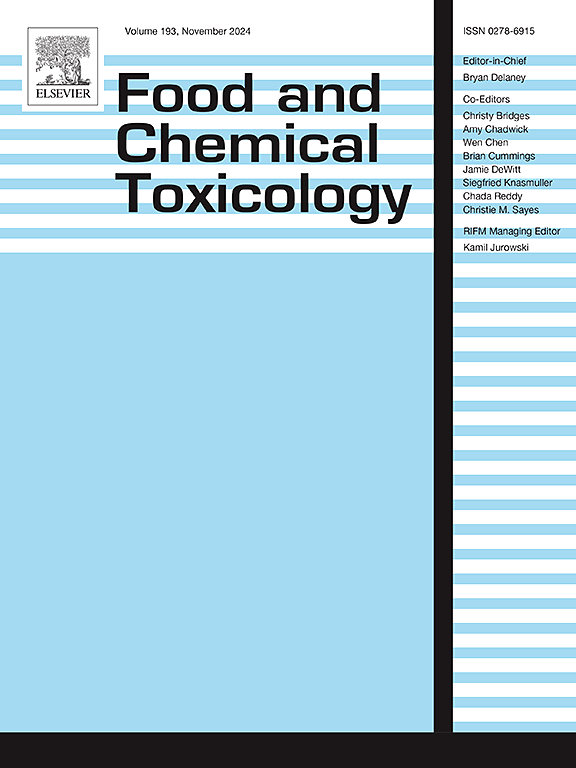A novel approach for identifying melamine adulteration in powdered milk with E-nose and AI
IF 3.9
3区 医学
Q2 FOOD SCIENCE & TECHNOLOGY
引用次数: 0
Abstract
Dairy products are exceptionally nutritious and a key component of our diet. They are utilized in a wide range of food industries due to their significance. However, being highly popular and valuable, they are among the most common products subject to adulteration. Melamine is a chemical compound deliberately added to various food products. It is used to artificially increase the apparent protein content in milk, milk powder, pet food, and other foods. In this study, pure milk powder along with 12 different types of adulterated samples (with melamine content of 1, 2, 3, 4, and 5 ppm) in both dry and wet forms was analyzed using an electronic nose equipped with 8 metal oxide sensors to detect adulteration patterns. Principal Component Analysis (PCA), discriminant analysis (DA), and Support Vector Machine (SVM) methods were employed to analyze sensor response patterns and classification. Quantitative Descriptive Analysis (QDA) yielded a precision of 99.5 %, while Multi-Discriminant Analysis (MDA) achieved a precision of 98.5 %. Therefore, it appears that electronic nose technology with metal oxide sensors, along with chemometric methods, can be a truly effective tool for the rapid detection and classification of pure milk powder from adulterated materials.
用电子鼻和人工智能鉴别奶粉中三聚氰胺的新方法
乳制品营养丰富,是我们饮食的重要组成部分。由于它们的重要性,它们被广泛用于食品工业。然而,由于它们非常受欢迎和有价值,它们是最常见的掺假产品之一。三聚氰胺是一种故意添加到各种食品中的化合物。用于人为增加牛奶、奶粉、宠物食品和其他食品中的表观蛋白质含量。在这项研究中,纯奶粉和12种不同类型的掺假样品(三聚氰胺含量分别为1、2、3、4和5ppm)以干法和湿法形式进行了分析,使用配备了8个金属氧化物传感器的电子鼻来检测掺假模式。采用主成分分析(PCA)、判别分析(DA)和支持向量机(SVM)方法对传感器响应模式进行分析和分类。定量描述分析(QDA)的精密度为99.5%,而多判别分析(MDA)的精密度为98.5%。因此,具有金属氧化物传感器的电子鼻技术,以及化学计量学方法,可以成为快速检测和分类纯奶粉和掺假材料的真正有效工具。
本文章由计算机程序翻译,如有差异,请以英文原文为准。
求助全文
约1分钟内获得全文
求助全文
来源期刊

Food and Chemical Toxicology
工程技术-毒理学
CiteScore
10.90
自引率
4.70%
发文量
651
审稿时长
31 days
期刊介绍:
Food and Chemical Toxicology (FCT), an internationally renowned journal, that publishes original research articles and reviews on toxic effects, in animals and humans, of natural or synthetic chemicals occurring in the human environment with particular emphasis on food, drugs, and chemicals, including agricultural and industrial safety, and consumer product safety. Areas such as safety evaluation of novel foods and ingredients, biotechnologically-derived products, and nanomaterials are included in the scope of the journal. FCT also encourages submission of papers on inter-relationships between nutrition and toxicology and on in vitro techniques, particularly those fostering the 3 Rs.
The principal aim of the journal is to publish high impact, scholarly work and to serve as a multidisciplinary forum for research in toxicology. Papers submitted will be judged on the basis of scientific originality and contribution to the field, quality and subject matter. Studies should address at least one of the following:
-Adverse physiological/biochemical, or pathological changes induced by specific defined substances
-New techniques for assessing potential toxicity, including molecular biology
-Mechanisms underlying toxic phenomena
-Toxicological examinations of specific chemicals or consumer products, both those showing adverse effects and those demonstrating safety, that meet current standards of scientific acceptability.
Authors must clearly and briefly identify what novel toxic effect (s) or toxic mechanism (s) of the chemical are being reported and what their significance is in the abstract. Furthermore, sufficient doses should be included in order to provide information on NOAEL/LOAEL values.
 求助内容:
求助内容: 应助结果提醒方式:
应助结果提醒方式:


